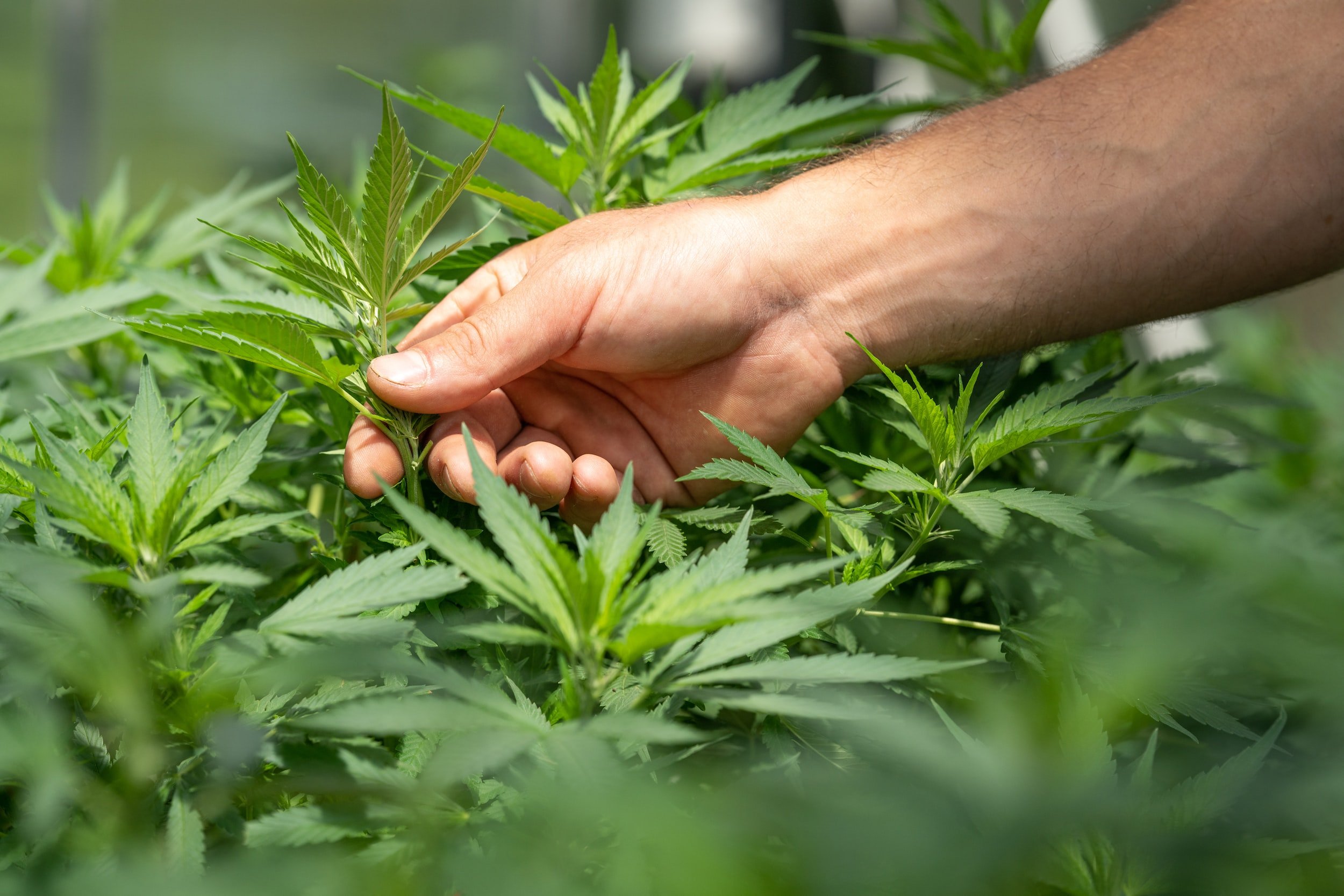
A Quick Guide to Cannabis
Who’s Who
Hemp
A variant of cannabis that contains less than 0.3g of THC, commonly consumed and also used in manufacturing
Marijuana
A variant of cannabis that contains more than 0.3g of THC, the plant we use in our skinny pre-rolls
THC
Tetrahydrocannabinol: They psychoactive compound (cannabinoid) in marijuana plants that makes you feel high
CBD
Cannabidiol: Another prominent compound in the cannabis plant known for its non-psychoative, therapeutic affects
Strain
The different varieties of cannabis; like Gala vs. Granny Smith apples, they’re bred to highlight certain traits
Terpenes
Different organic compounds in cannabis strains that give them their signature smell and effect
Hemp
With first estimated use as arealy as 10,000 years ago, hemp was originally cultivated for manufacturing purposes, being braided into ropes, clothing, and other durable goods
Even today, hemp is critical in green, sustainable manufacturing due to its durability, versatility, and positive effects on the soil in which it’s grown
CBD rich hemp is smoked, consumed, and even used in topical applications for its therapeutic, calming, and pain relieving effects
Marijuana
First smoked ceremonially in Eastern Asia over 2,500 years ago, Marijuana is enjoyed the world over for its psychoactive properties
Marijuana has gotten stronger over the years, with the average strain now containing over 200% the average THC measured just 20 years ago
Marijuana has similar effects as consumable hemp, but also alters the way consumers think and feel, which can further enhance the benefits offered by the CBD itself
Variants and Strains
Within each of the three variants below are hundreds of different strains bred to exhibit certain characteristics and provide different experiences - all with their own unique names
A common misconception is that the three variants have their own specific effects; indica being said to be relaxing and sedative, sativa energizing and cerebral. The truth is, the variant has little to no influence on the effect. Terpenes are what gives each strain its specific effects, and these terpenes exist in varying concentrations across the indica - hybrid - sativa spectrum.
Sativa
Tall, skinny plants with long, thin leaves
Common Strains:
Amnesia Haze
Durban Poison
Sour Diesel
Hybrid
Different shapes and sizes depending on the parent strains
Common Strains:
Blue Dream
OG Kush
Pineapple Express
Generally takes the shape of the dominant strain
Indica
Short, bushy plants with full, thick leaves
Common Strains:
Chemdawg
Girl Scout Cookies
Northern Lights

A Brief Note on Terpenes
Whenever you hear someone describe their weed as smelling “dank”, “fruity”, or “earthy”, they’re talking about terpenes, compounds naturally produced by plants.
The fuzzy looking coating on the bud to the left is a network of trichomes, which produce and hold the terpenes and cannabinoids of the plant
Terpenes help the plant in the wild by attracting certain species that help them pollinate, while repelling dangerous predators
When consumed by humans, especially in the form of edibles, certain terpenes have different perceived effects, such as anxiety relief and body-wide relaxation.
There is still much research to be done on the exact mechanism of terpenes within the body.
Common Terpenes
Myrcene
Smell: Earthy, Herbal
Effect: Relaxation, Sedation
Found In: Hops, Mangoes
Limonene
Smell: Citrus, Lemon
Effect: Stimulation, Mood Lift
Found In: Citrus Rind, Juniper
Linalool
Smell: Floral, Sweet
Effect: Lower Anxiety, Calming
Found In: Lavender, Lilac
Beta-Caryophyllene
Smell: Pepper, Musk
Effect: Pain Relief, Relaxation
Found In: Cinnamon, Cloves
Pinene
Smell: Pine, Wood
Effect: Anti-Inflammatory, Focus
Found In: Conifers, Rosemary
Humulene
Smell: Herbal, Spice
Effect: Analgesic, Energetic
Found In: Ginger, Ginseng
The Endocannabinoid System
The cannabinoids in cannabis are responsible for making us feel “high”. But why? Turns out our bodies are full of receptors that these compounds interact with, as they’re built for similar naturally present neurotransmitters called endocannabinoids.
THC
Tetrahydrocannabinol
CBD
Cannabidiol
Baseline
CB1 receptors in the brain respond to endocannabinoids that regulate things like memory, cognition, appetite, and pain recognition
CB2 receptors all over the body respond to endocannabinoids that regulate our immune system, organ performance, and inflammation
CBN
Cannabinol
CBG
Cannabigerol
With Cannabis
CB1 receptors respond to cannabinoids in the plant providing the head high: creativity, relaxation, sensory enhancement, and more
CB2 receptors respond to cannabinoids in the plant providing many therapeutic effects of cannabis, like reduced inflammation
THCV
Tetrahydrocannabivarin
CBDV
Cannabidivarin


















